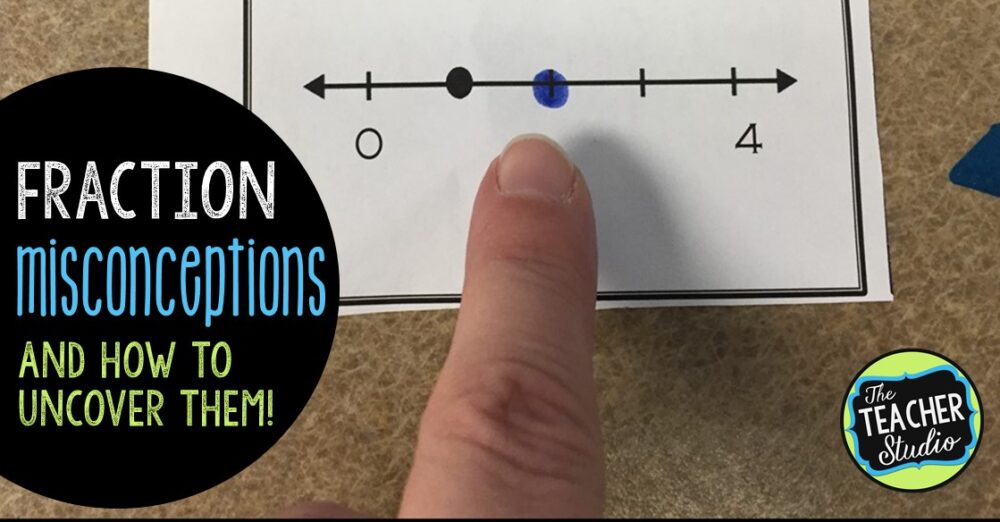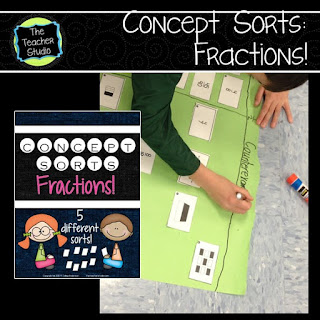
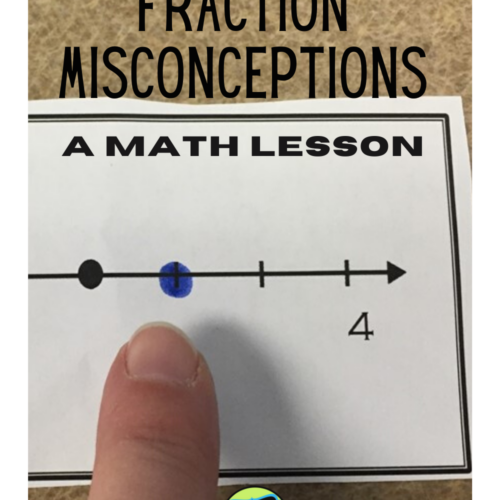
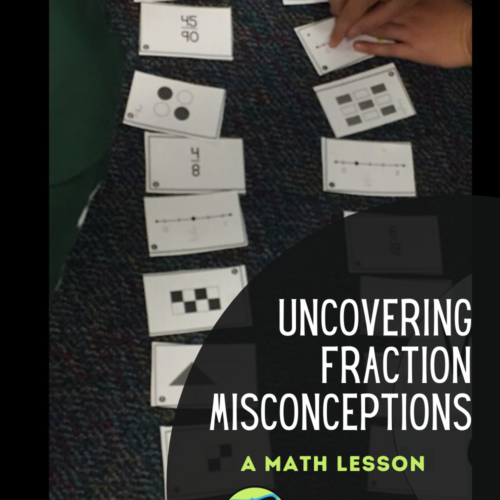
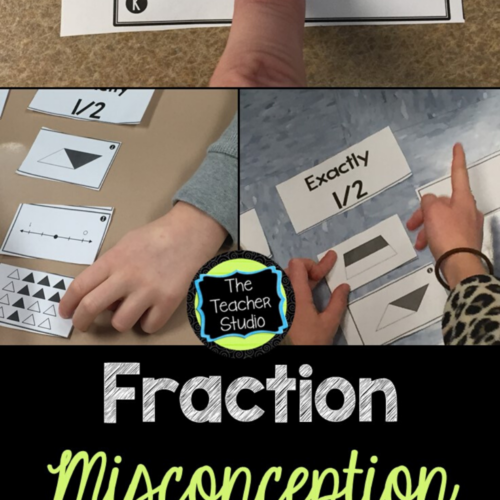

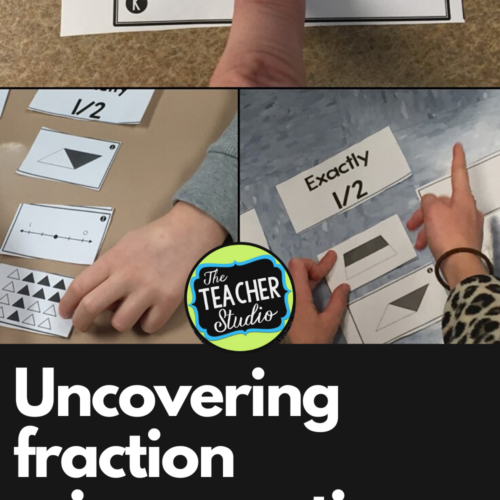
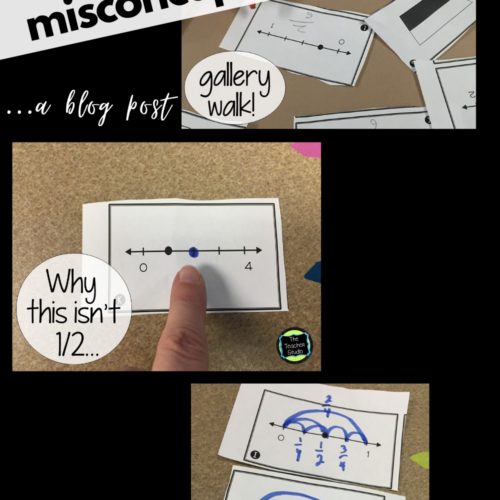
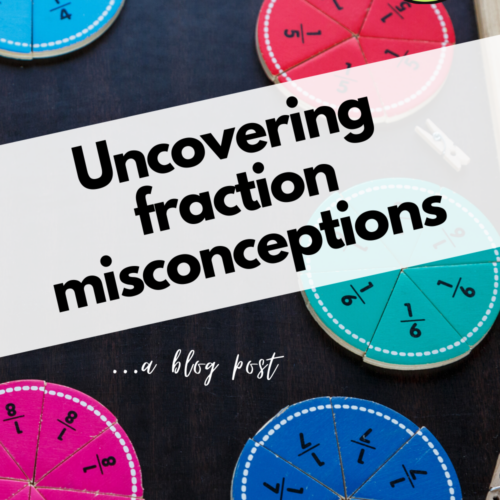

Although we did some dabbling in fractions earlier this year, we now did into the “meat” of our studies and I wanted to get a sense for where my students were with their basic fraction understanding. One problem I see in elementary math classrooms is our tendency to rely on quick and easy information–a pretest, a worksheet, an exit slip. The simple truth is, in order to really see HOW students are thinking (rather than “Did they get it right?”) requires you to put students in situations where you can watch them work and listen to their conversations.
It seemed like an easy question
The other day I gave me students a concept sort to do–it was simply “Is it equal to 1/2 or not?”. I really and truly believed that this should be a quick review and I primarily wanted to use it to get their minds ready for our new unit.
Boy, was I wrong.
I saw misconceptions GALORE–but only after I asked them to do some deeper work. Here’s what I mean.
The question was simple…the sort was simple. Looking at the images of shapes, numbers, and number lines–sort them into piles that show which ones are “worth” 1/2.
(NOTE: We DID use the word “equivalent” because it has been introduced before)
Most groups were able to do this successfully…there were a few cards that got some debate and discussion–especially the two that didn’t show equal parts. As I saw groups finishing, I then asked them to WRITE the fraction represented on each card. This is where things started to get interesting–especially on the number lines.
I circulated around the groups listening for logic, jotting down notes about misconceptions I heard, and getting ready to figure out how to change my plan. It was becoming evident that we needed more time!
The power of a gallery walk
I then gave each group a different colored marker (smelly ones, of course!) and asked them to do a gallery walk…they put a colored dot on any card they had questions about or disagreed with. 
After a few minutes, I walked around and collected some “heavily dotted” cards. All the number line cards because it was clear that we had some HUGE misconceptions to clear up. I know that we so often present problems in the same way over and over. We tend to use the area model to teach fractions–and number line understanding is usually given only a cursory look–if at all. It was very clear that we need to zoom in on this–so we did. Here’s the deal–MANY of the students had the cards in the right category. They said they were NOT 1/2…but when I looked at what they WROTE on their cards and listened to their discussions, I knew they weren’t getting it. In other words–on an exit slip or test they would have gotten it right! YIKES!
AMAZING discussions!
We used all the different number line cards to study…we looked at the starting point…the ending point…how many “jumps”…the “halfway” point–and more. We had some GREAT discussions and you could almost HEAR the wheels turning!
The biggest issue really seems to be “attending to precision” and detail. Students even admitted that they rushed through without really looking at all the information presented. We took this one and discussed it at length because some students still seemed a little fuzzy about why this black dot wasn’t 1/4 and the blue dot 1/2. The students did a great job convincing each other–and what a great way to practice “critiquing the reasoning of others”.
As we move through this unit we will be doing 4 more sorts as well–and many of the activities found in my big constructivist fraction resource. If you value this type of math instruction and want to try it for yourself–consider checking them out!
Want more fraction teaching ideas and freebies? Click HERE or the image below!

